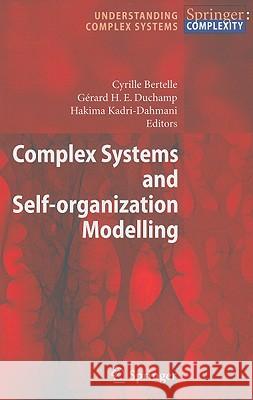Complex Systems and Self-Organization Modelling » książka
Complex Systems and Self-Organization Modelling
ISBN-13: 9783540880721 / Angielski / Twarda / 2009 / 236 str.
Theconcernofthisbookistheuseofemergentcomputingandself-organization modellingwithinvariousapplicationsofcomplexsystems. Wefocusouratt- tion both on the innovative concepts and implementations in order to model self-organizations, but also on the relevant applicative domains in which they can be used e?ciently. First part deals with general modelling and methodology as conceptual - proaches for complex systems description. An introductive chapter by Michel Cotsaftis entitled A Passage to Complex Systems, treats the notion of Complex Systems in opposition to that of a Complicated System . This can be, he claims, comprehended immediately from the latin roots as C- plex comes from cum plexus (tied up with) whereas complicated ori- natesfrom cumpliare (piledupwith). Thepaperisawideandrichdisser- tion with elements of history (of the technical developement of mankind) with its recents steps: mechanist, quantum and relativistic points of view. Then, the need for a passage is illustrated by the discussion, with tools borrowed from functional analysis, of a typical parametric di?erential system. The last and conclusive parts give tracks for the study of Complex Systems, in parti- lar one can hope to pass to quantitative study and control of complex systems even if one has to consent a larger intelligence delegation to them (as - nounced in the introduction) by using and developing tools already present in dissipative Physics and in Mathematical functional analysis and ?xed point theorems, for instance. This passage is followed by a wide bibliography of more than 90 entries. The (non hasty) reader is invited to read this deep and far reaching account before browsing through the book."











